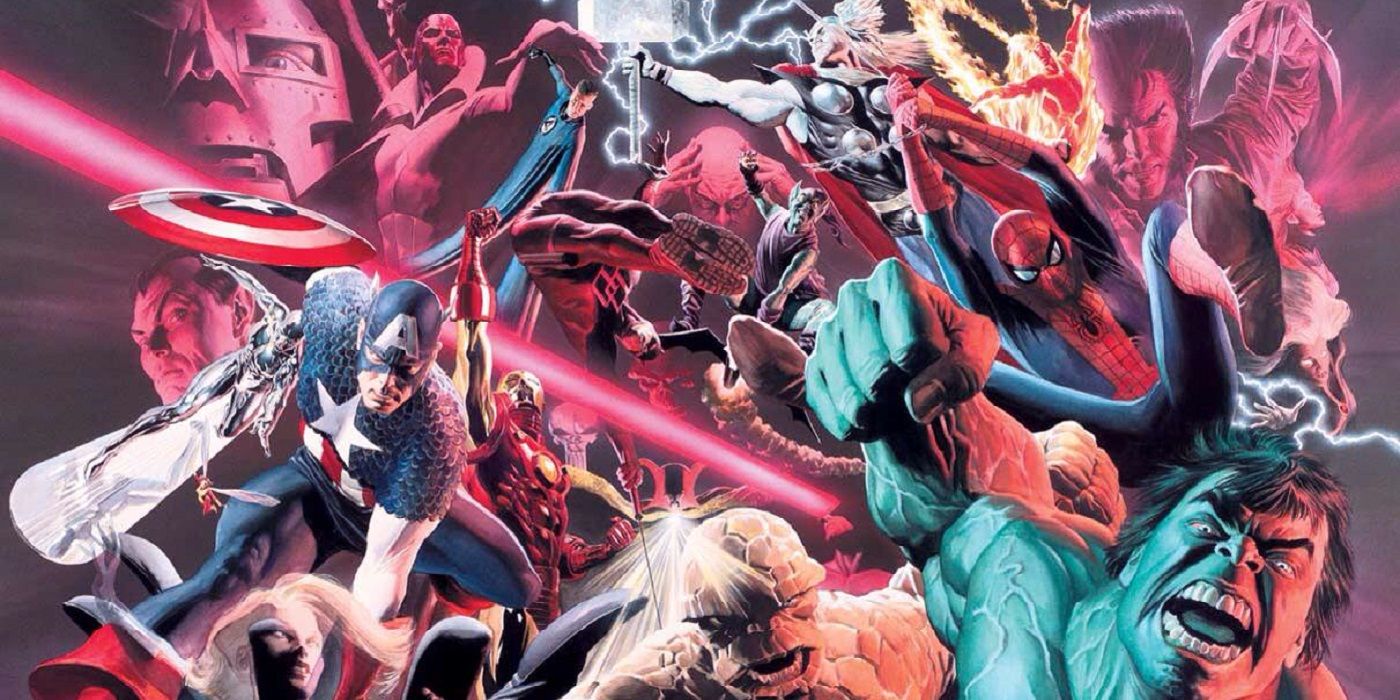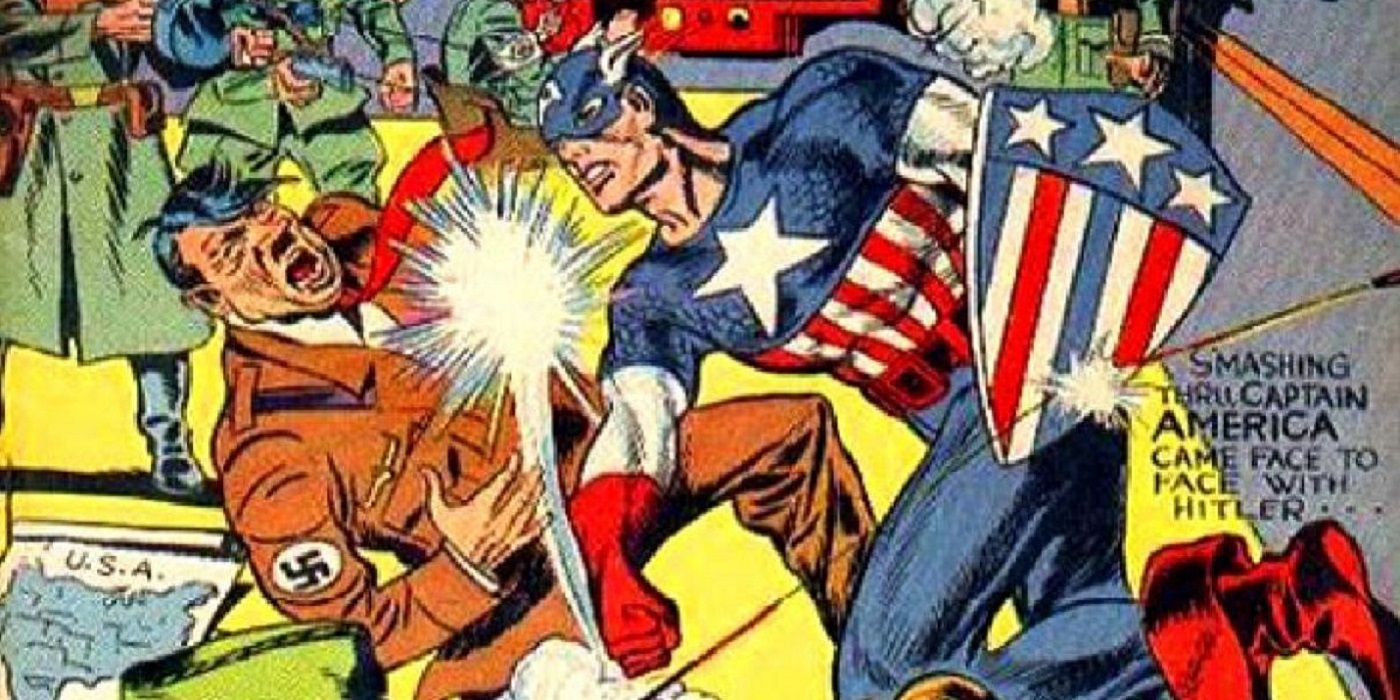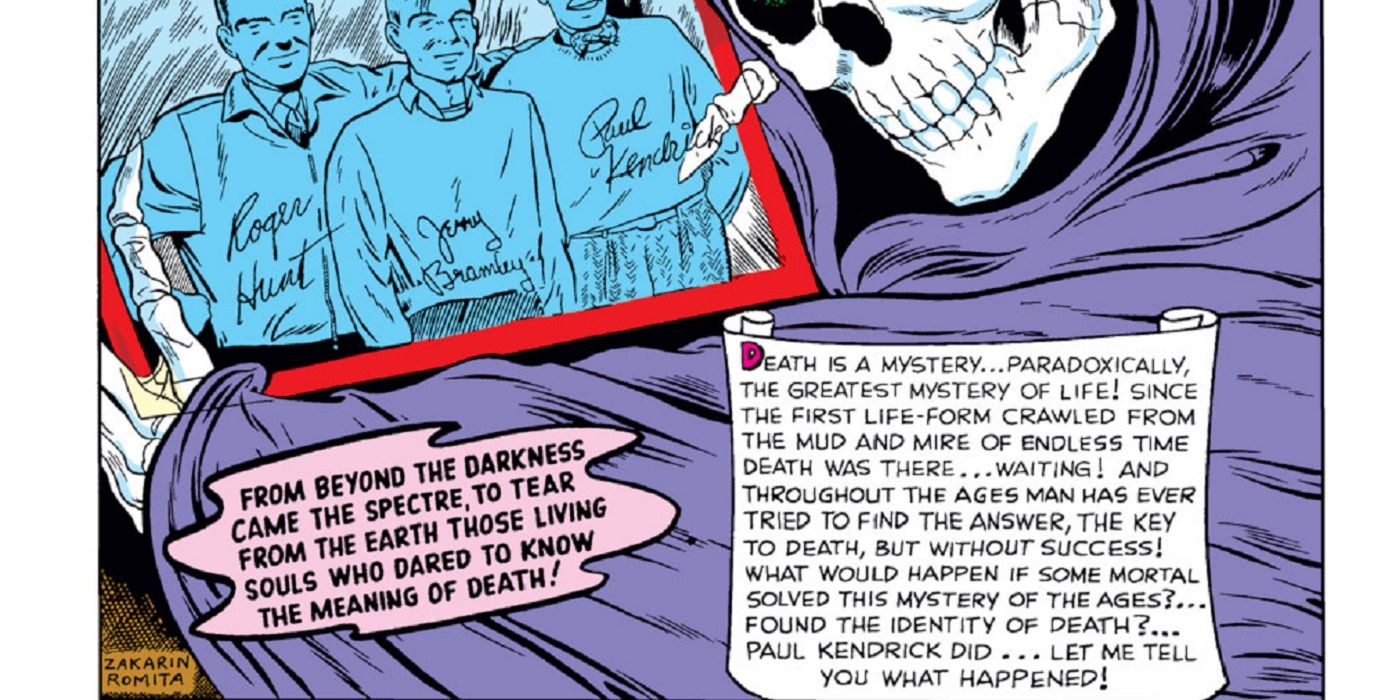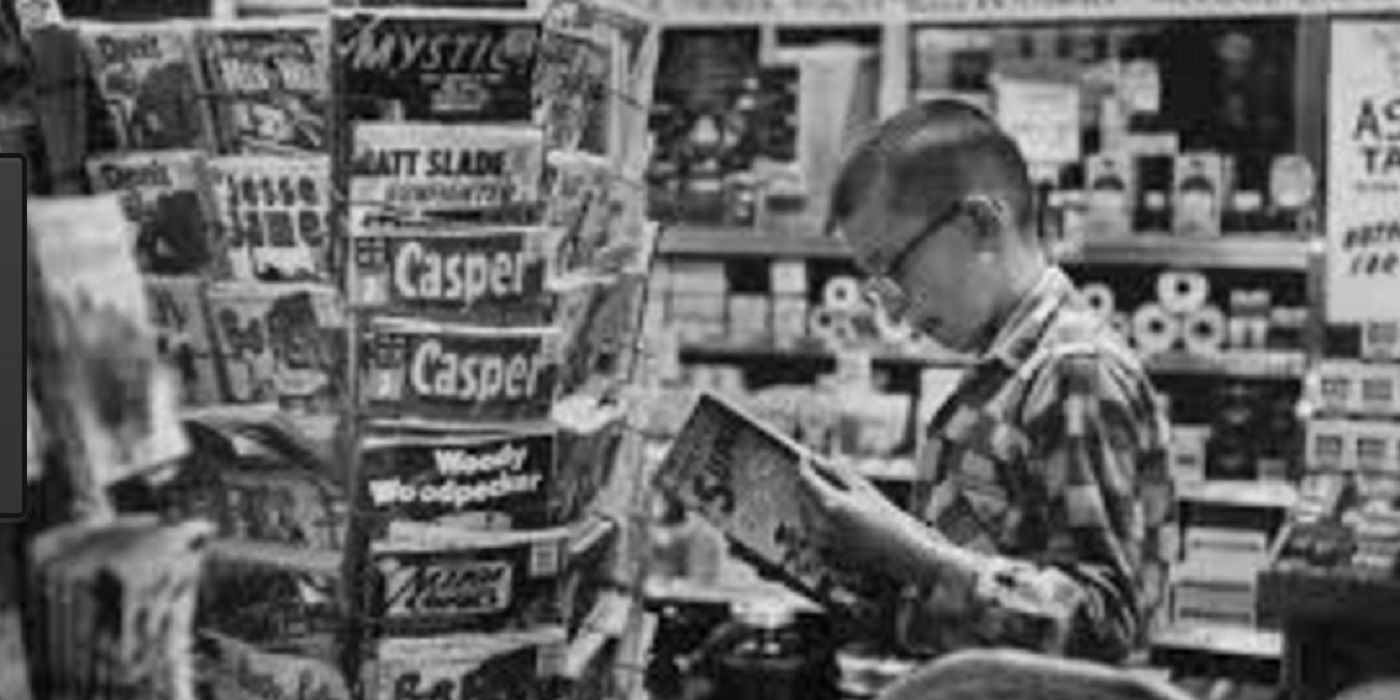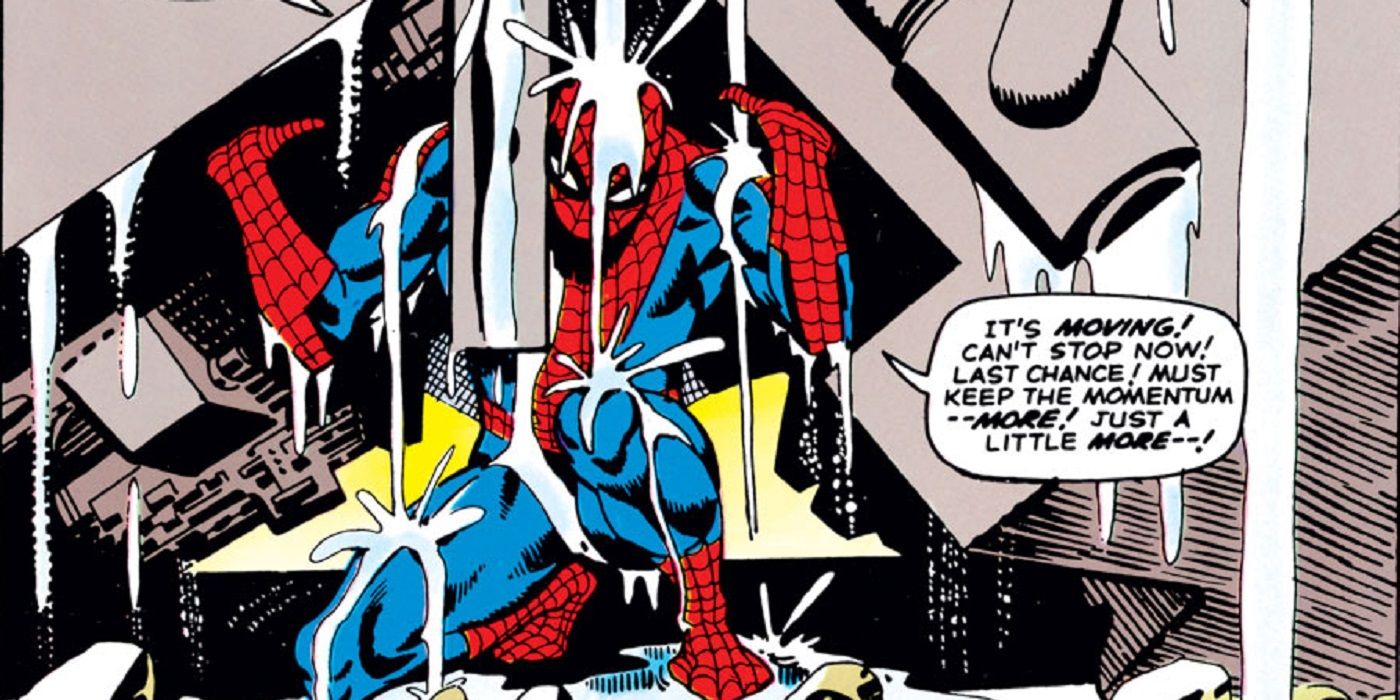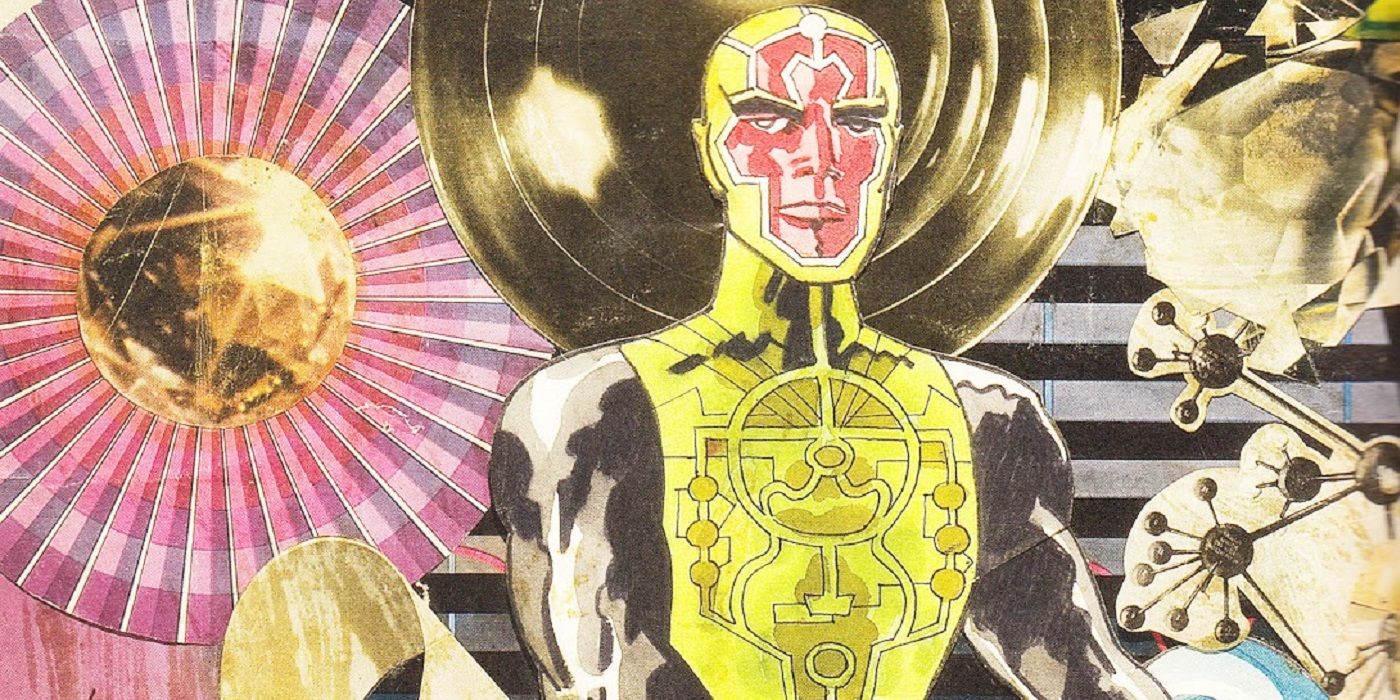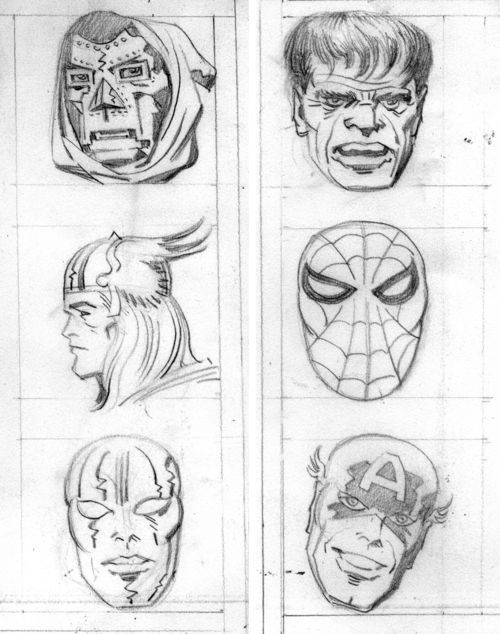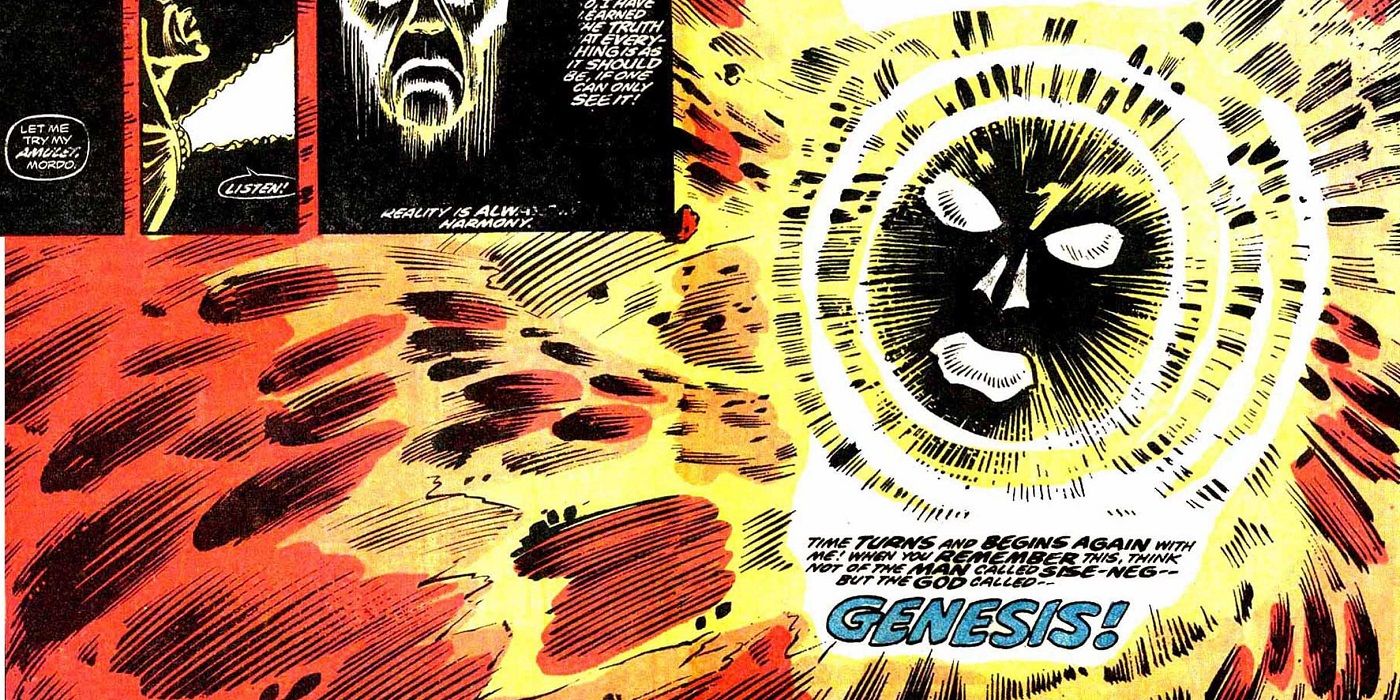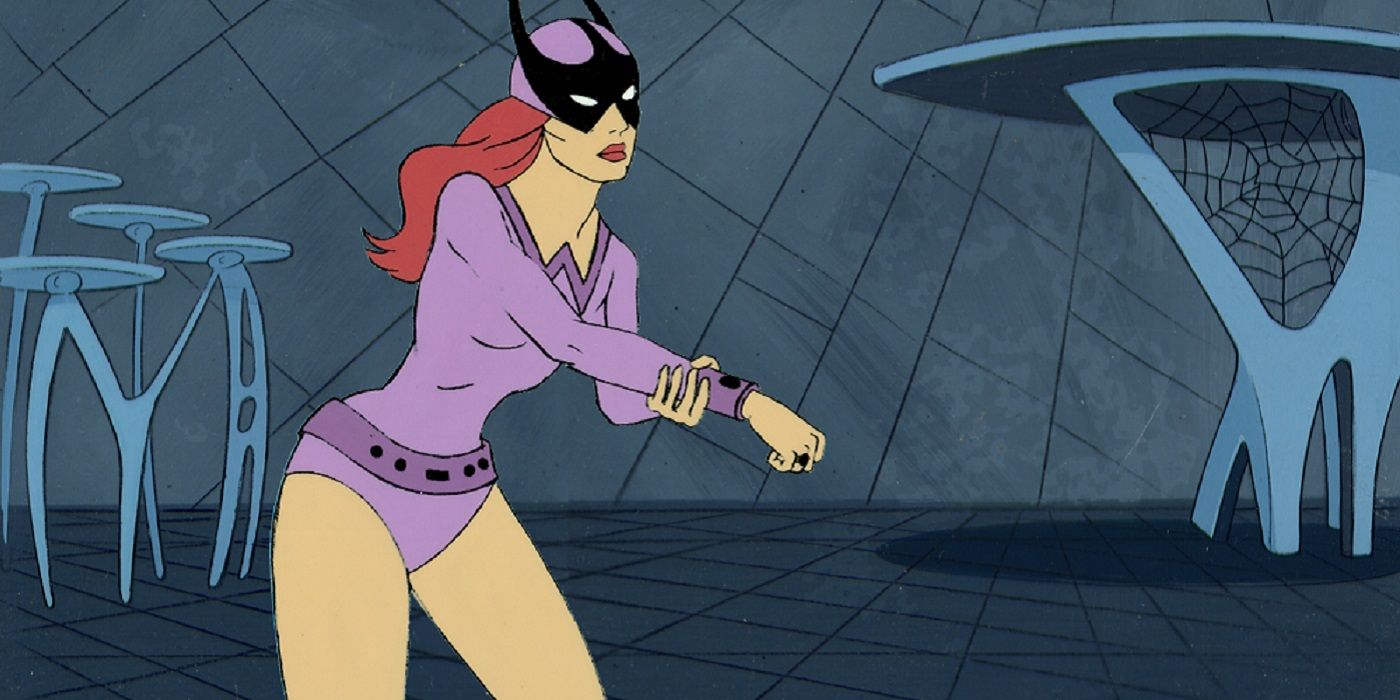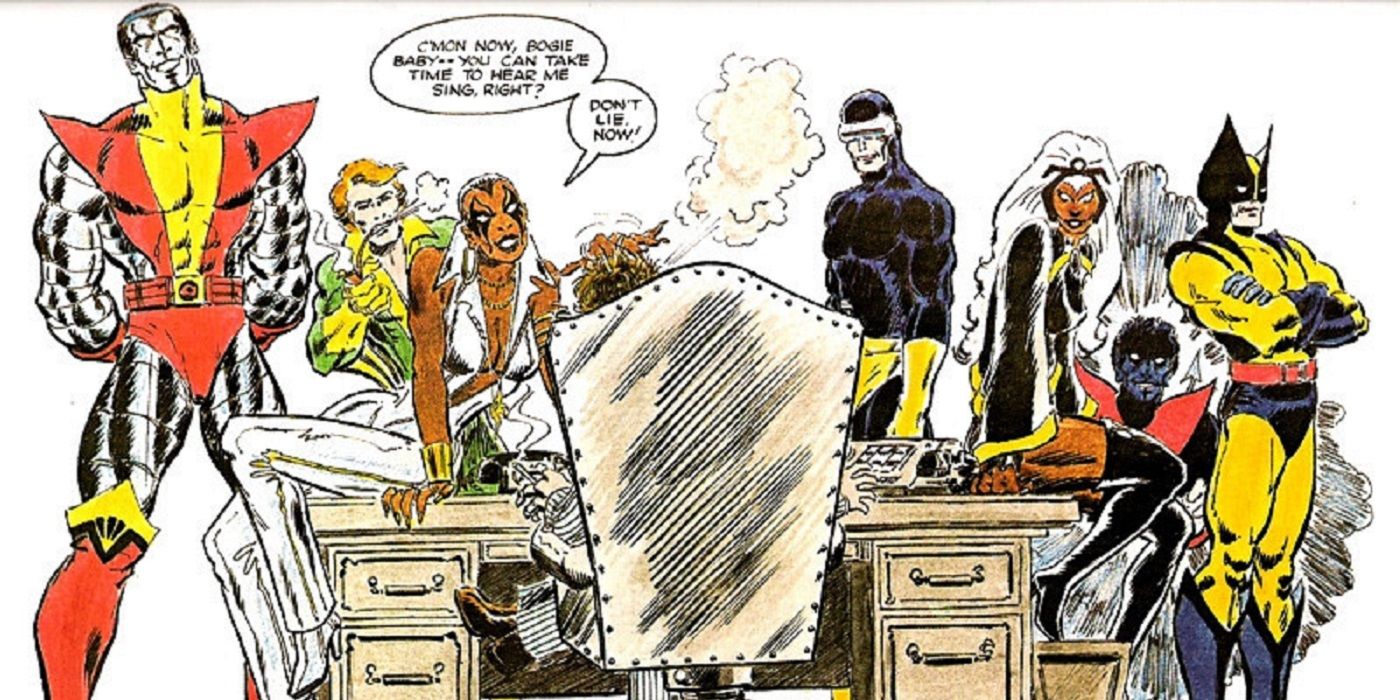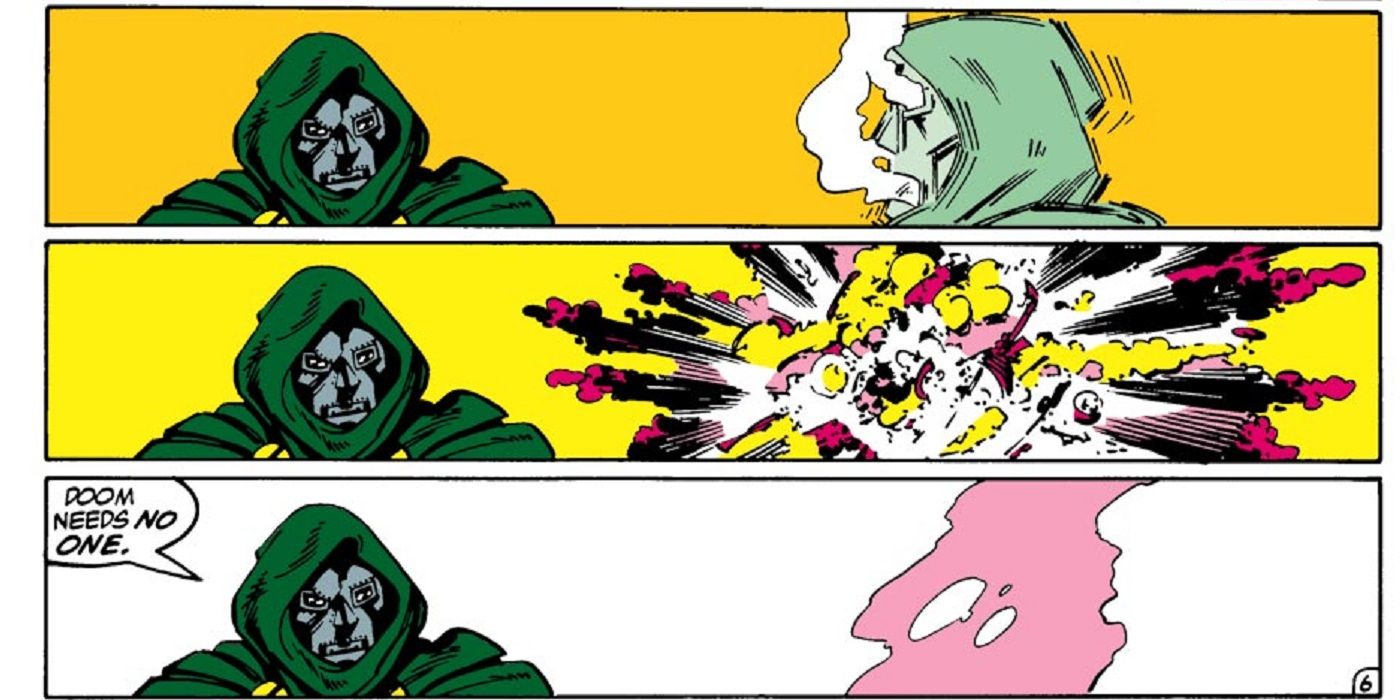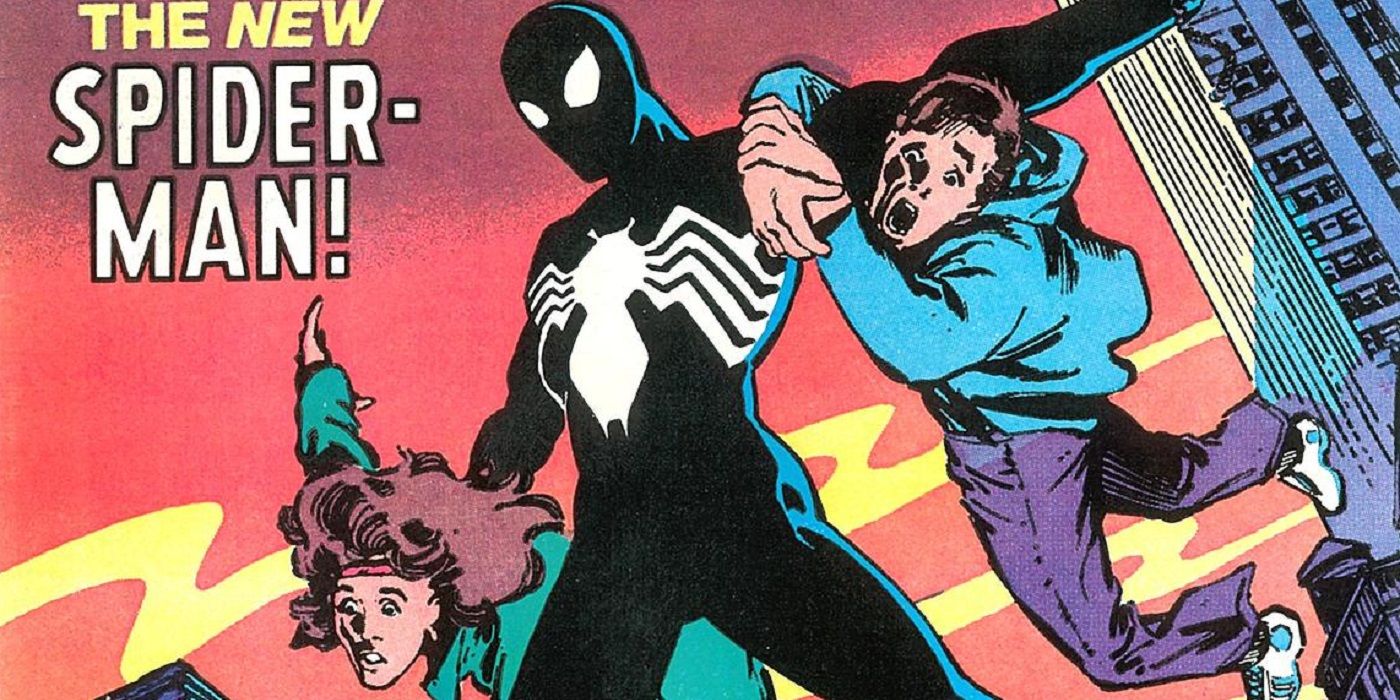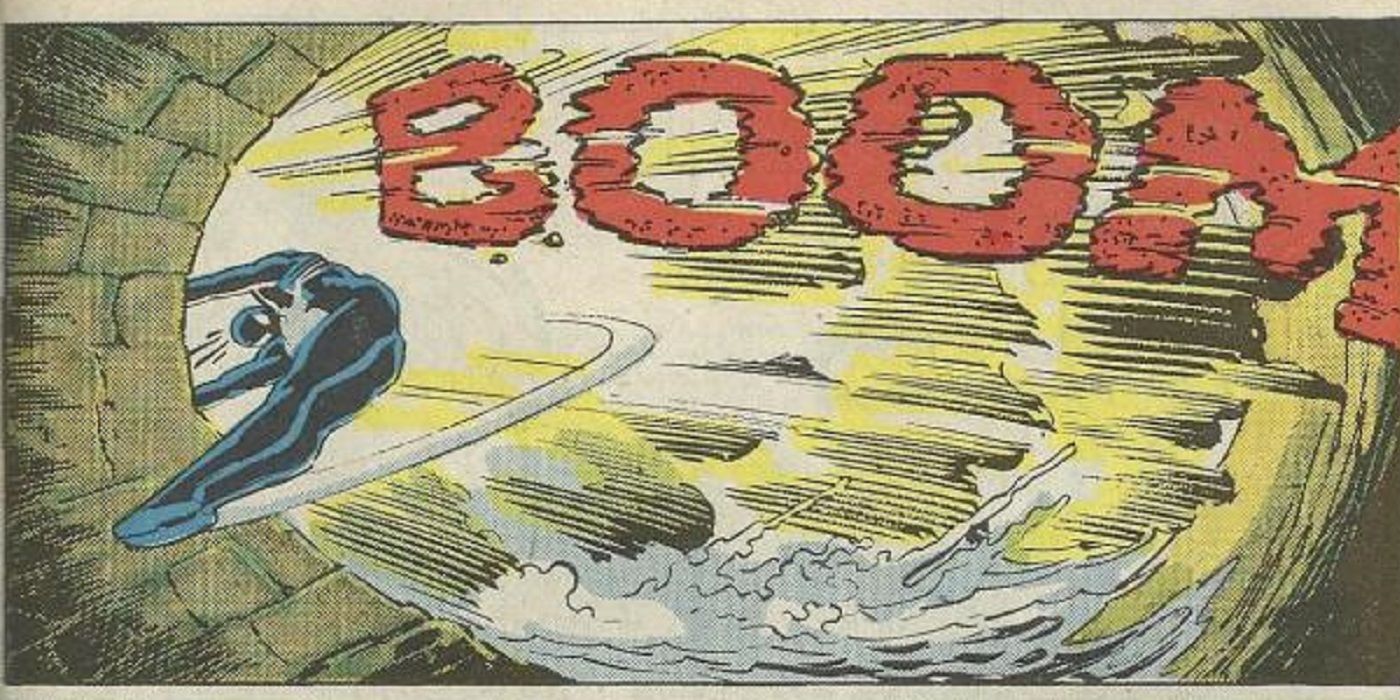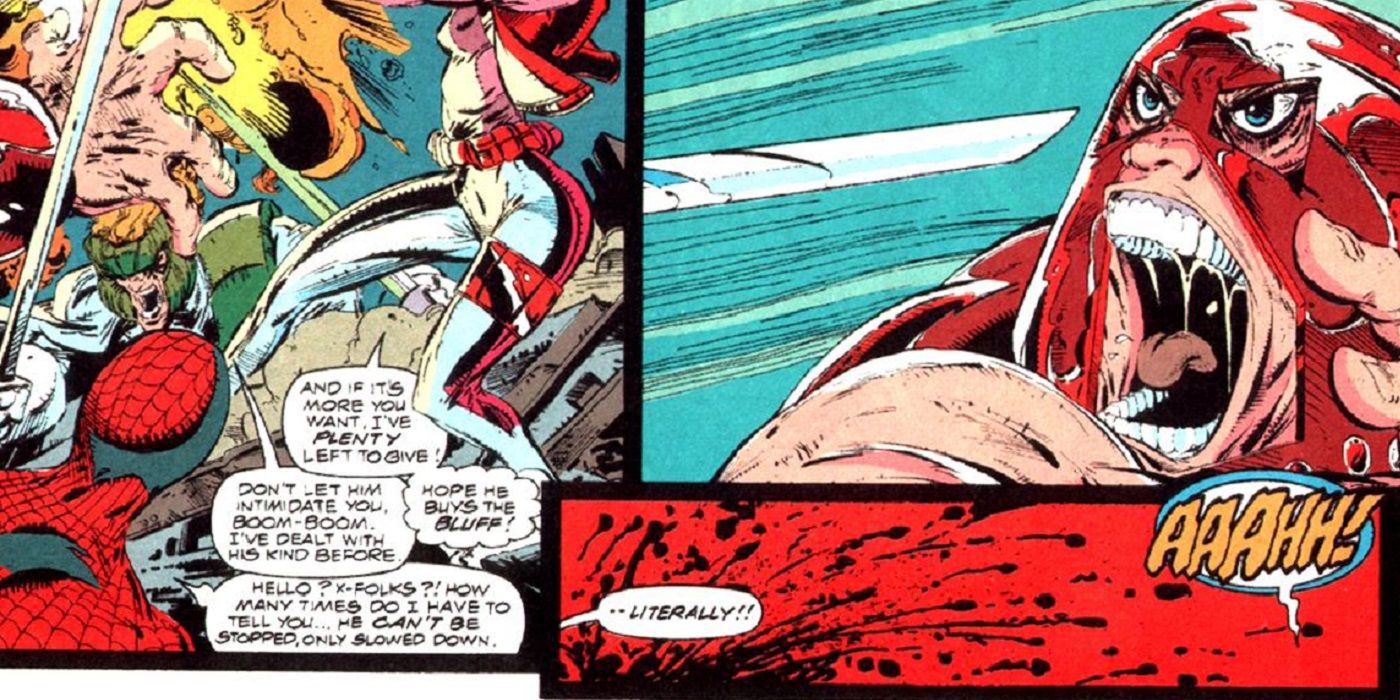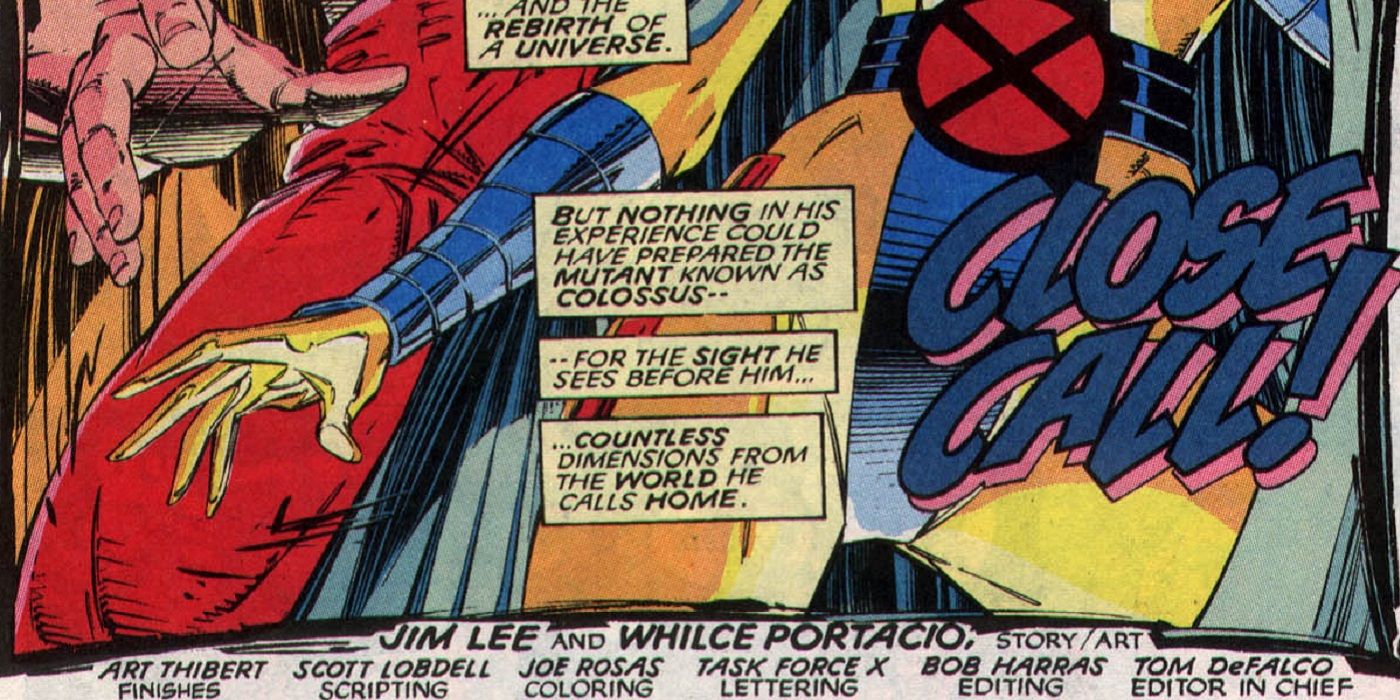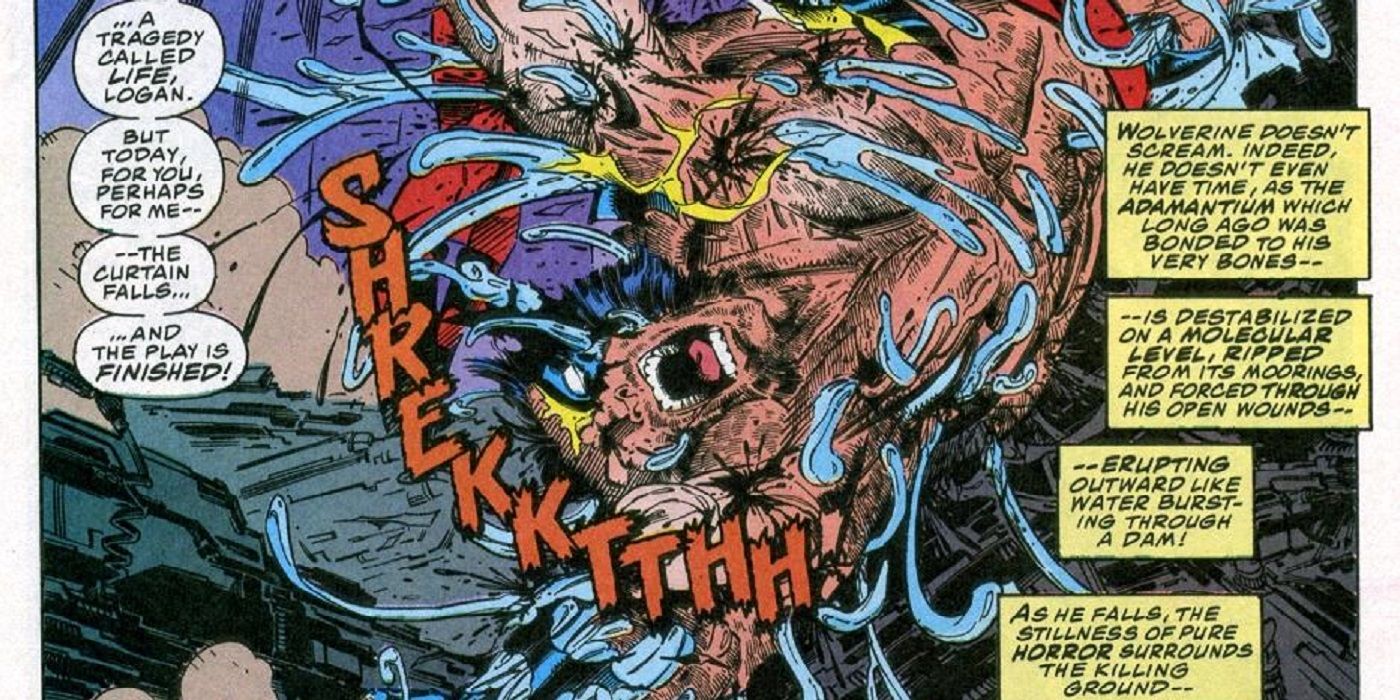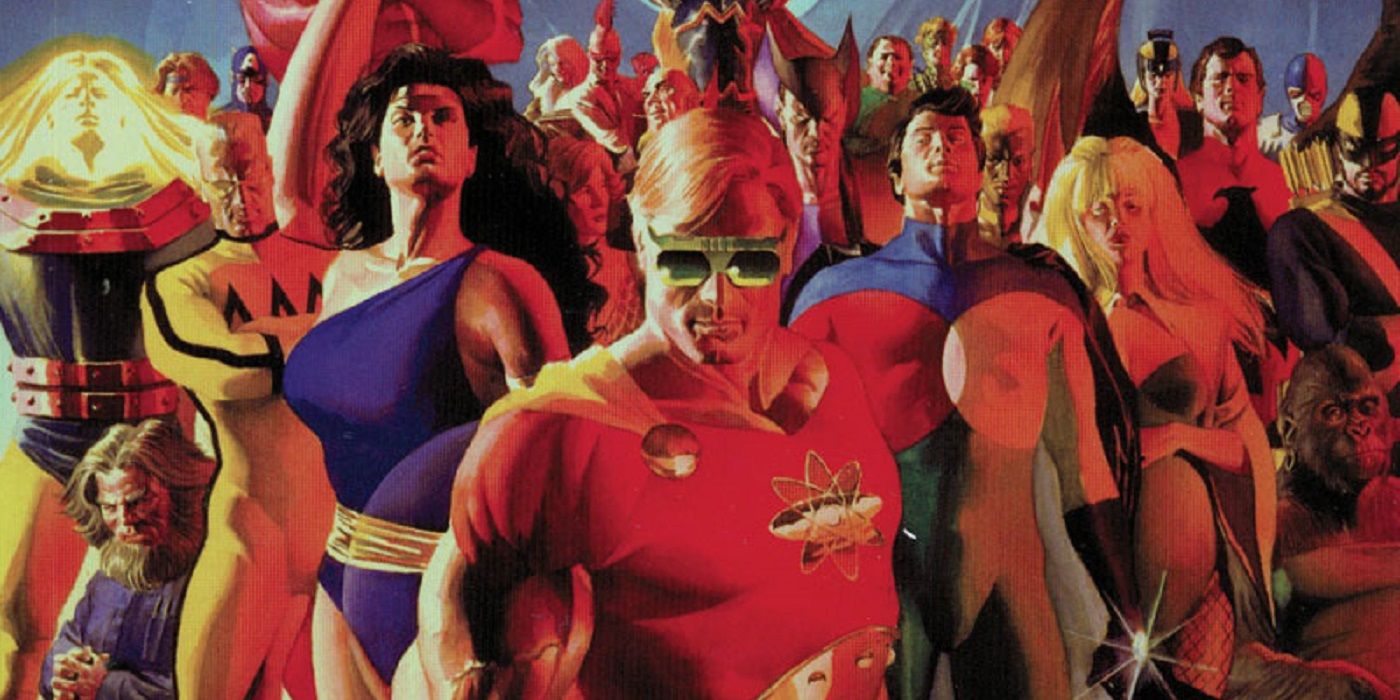In 1939, it was becoming clear in the publishing industry that there was money to be made by producing comic books. One of the people who saw this happening was Martin Goodman, who was a publisher of pulp fiction magazines. Goodman's first comic book, Marvel Comics, sold 80,000 copies. Impressed, he then put out a second printing, which sold 800,000 copies. He was now fully on board with comic book production and hired a number of creators to work for him directly, including Joe Simon and Jack Kirby, who would soon produce Captain America Comics for Timely.
RELATED: Cheesecake Factory: The Most SCANDALOUS Comic Art Of All Time
Timely rode out the superhero boom of the 1940s and moved on with the rest of the industry to crime comics, western comics, monster comics and the like until 1961, when Kirby and Stan Lee (who had become the Editor-in-Chief of the company in the 1940s) debuted "Fantastic Four," kicking off a second superhero boom known as the "Marvel Age," as the company took on the new name of Marvel Comics. By the start of the 1970s, Marvel was the top-selling company in comics, a distinction it has continued to hold ever since. That success has not been without some behind the scenes drama, though. Here are 15 crazy behind the scenes stories from Marvel's long history (in chronological order).
15 THE NYPD GUARDED MARVEL FROM NAZIS
The famous cover of Captain America Comics #1 featuring Captain America punching Adolf Hitler is a classic, but what's important to remember about the cover and what sometimes gets lost in the vagaries of history, is that the United States had not entered World War II at the time that the comic book came out. In fact, the United States was still a year away from getting involved in the conflict, so at the time of the release of Captain America Comics #1, this was a superhero punching out the leader of another country. It was not a piece of war propaganda, it was a political statement by Jack Kirby and Joe Simon, the creators of Captain America.
It also aggravated the supporters of Nazi Germany living in the United States. They protested Timely and even made threats of violence towards the young creators behind the comic. Eventually, New York City Mayor Fiorello La Guardia actually personally contacted Joe Simon to tell him, "You boys over there are doing a good job. The City of New York will see that no harm will come to you." Timely received police protection and eventually the attention died down.
14 JOHN ROMITA FAKED HIS ID AT MARVEL
One of the earliest Marvel Comics artists still around today is John Romita Sr. Romita was Marvel's long-time Art Director and famously was adept at doing pretty much whatever you needed to have done on a comic book page, whether it be penciling, inking or doing corrections on someone else's work. He's best known, though, for re-defining Spider-Man's look after Spider-Man's creator, Steve Ditko, left Marvel.
When Romita made his debut at Marvel in 1951 (when the company was called Atlas Comics), it was as an inker... but a fake inker! You see, there was an artist working for Marvel called Lester Zakarin who didn't actually pencil his comics. He had other artists do it and then he would ink them. So he hired Romita as his ghost artist so Marvel would think the art was penciled by Zakarin and inked by Romita when it was the other way around. When Romita and Zakarin split, Romita told Stan Lee the truth and Romita was soon a regular Marvel penciler throughout the rest of the 1950s.
13 DC SAVED MARVEL'S LIFE
Goodman owning his own distribution company was a major boon to Marvel in 1954 when the comic book industry suffered dramatically from the bad publicity over a Senate subcommittee that investigated whether the content of comic books were leading to juvenile delinquency in the country. When the dust settled, a bunch of comic book companies went out of business, but Marvel was in better shape since they distributed their own comic books.
However, once they weathered the initial storm, Goodman had to deal with the overall slumping sales of the next couple of years. So in 1956, Goodman decided it made more sense financially to distribute their books through the largest distributer, American News Company. Then the next year American News Company went out of business due to various lawsuits against it. Marvel was without a distributor for their comics, so they had to turn to DC Comics, who owned their own distributor, and they agreed to take Marvel on, keeping the company afloat, but they would only publish 8-12 Marvel Comics a month, down from about 40. Lots of artists lost their jobs, but the company at least stayed in business.
12 STEVE DITKO HATED STAN LEE
As the "Marvel Age" of comics boomed in the 1960s, so too did the "Marvel Method," where Stan Lee would come up with a plot, the artist would draw the comic based on the plot and then Lee would add dialogue to the drawn comic. However, as time went by, the artists were contributing more and more of the plot by themselves. Steve Ditko and Jack Kirby, in particular, were doing more and more of the plotting of their series by themselves and Ditko was unhappy about the lack of credit and what he felt was a certain lack of control.
Lee agreed then to let Ditko plot the book by himself and from Amazing Spider-Man #25 on, Ditko not only plotted the book by himself, but did not even speak to Lee for the rest of their run together, dealing with Marvel production Sol Brodsky only (providing notes with the art so that Lee could add dialogue based on Ditko's notes). Ditko still didn't like working for Marvel even with this arrangement and left after Amazing Spider-Man #38.
11 THE NEW GODS WERE MEANT TO BE MARVEL
Like Steve Ditko, Jack Kirby was getting increasingly annoyed at Marvel as the 1960s wore on. In Kirby's case (and presumably Ditko's, as well), he was aggravated that Marvel was booming with characters that he co-created and that he would only get paid his regular page rate when the characters were becoming cultural icons (and getting adapted into cartoon series and appearing on licensed materials).
So, Kirby began to develop some new characters that he saw as an extension/expansion from the Norse gods that Kirby was so fond of in the pages of Thor. However, he would only let Marvel use them if they gave him a financial interest in the characters. They balked, so he held on to them for himself. Amusingly, the Metron piece above was drawn on the back of these Marvel buttons that Kirby designed for Marvel...
Eventually, he just left Marvel for DC Comics in 1970 and brought these characters with him and they evolved into his "Fourth World" characters at DC. However, very few were adapted directly. Metron was a rare example of one of his Marvel designs showing up as it was originally designed.
10 THEY FAKED A FAN LETTER FROM A PRIEST
During the early 1970s, as Stan Lee stopped writing as many comic books as he used to, Marvel had an influx of young comic book writers join Roy Thomas in writing most of the Marvel line of books. These young writers helped re-define the Marvel Universe and they tried to push a lot more buttons than their predecessors. In the case of Steve Englehart, he was writing the "Doctor Strange" feature in Marvel Feature with artist Frank Brunner (who was inked by a number of different inkers) and they had a storyline where Doctor Strange encountered Sise-Neg, who was, in effect, God.
When Stan Lee saw what they were doing, he didn't like it. He said it was going to offend people, so he had them prepare a statement in the new Doctor Strange ongoing series where they would explain that Sise-Neg wasn't God, but just a god. Instead, when Englehart was traveling through Texas for some reason, Brunner had Englehart mail a fan letter to Marvel from a fictional Texas Reverend named David Billingsley who told Marvel how much he loved the story. Instead of a retraction, Marvel just printed the letter.
9 SPIDER-WOMAN AND SHE-HULK WERE STRATEGIC CREATIONS
As Marvel became the most popular comic book company in the 1970s, their profile expanded to the point where they suddenly had to worry about other companies possibly trying to cash in on the goodwill that Marvel had built up with their characters. In the mid-1970s, Filmation had a cartoon series about Tarzan that they combined with Batman to form the Tarzan/Batman Adventure Hour. It proved popular enough that Filmation was going to expand it to two hours and add more superheroes, but this time make it original superheroes so they didn't have to pay any license fees.
One of these heroes would be Spider-Woman! Marvel heard this and quickly put out their own Spider-Woman character and trademarked her, blocking Filmation. Filmation named their character Web Woman, instead. Similarly, with the success of Universal's Incredible Hulk TV series, Marvel feared that they would try to introduce their own female Hulk character on the show, so Marvel cut them off at the pass by quickly inventing She-Hulk and trademarking the character.
8 DAZZLER'S STRANGE ORIGINS
In the late 1970s, Marvel was also looking to use their newfound market prominence to expand into new and different arenas of cross-marketing. Marvel had done a couple of very popular comic book specials starring the rock band, KISS. So, Casabalanca Records and Marvel got together to create a new superhero called the Dazzler. Casablanca Records (and their founder, Neal "Bogie" Bogart) would find a young woman to release an album as the Dazzler and then Marvel would put out a comic book starring the singer. They were also going to do a film using all of the talent on Casablanca Records' payroll. When Bo Derek showed interest in the idea, Dazzler was re-drawn to look more like her.
When the project fell through, Marvel decided to release a comic book starring Dazzler anyway, and it was a popular series that lasted a few years. Amusingly enough, Marvel then actually did go through with the concept in the late 1980s with a different character, a rock singer named Night Cat. The "real" Night Cat was played by Jacqueline Tavarez. Neither the comic book nor the album did well and Night Cat was never heard or seen from again.
7 THE BYRNE-CLAREMONT WAR
Chris Claremont and John Byrne (and inker Terry Austin) proved to be a popular team on X-Men. However, there were many conflicts between the two co-plotters where Byrne would want one thing and Claremont would want another. Eventually, Byrne just left the series and was given his own series to write and draw, Fantastic Four. However, the sniping did not stop there.
Claremont had Doctor Doom guest-star in Uncanny X-Men and had the X-Men villain Arcade strike Doom's armor to light a match. Byrne then did an issue of Fantastic Four where the Doom from that story was revealed to be a robot. Byrne had an issue where the Fantastic Four spared Galactus' life because he was a force beyond good and evil. Claremont had to kill off Phoenix because of her destroying a planet, which he did not like, so he had the Shi'ar Empress, Lilandra, scold the Fantastic Four in the pages of Uncanny X-Men over their actions. Byrne responded by having Lilandra and the Shi'ar appear in an issue of Fantastic Four where they ended up agreeing with the Galactus decision. As long as the two were both writing for Marvel in the 1980s, the back and forth continued to inspire comic book plots.
6 MARVEL BOUGHT SPIDEY'S BLACK COSTUME FOR $200
In 1983, Marvel introduced a shocking change in the world of Spider-Man when Spidey debuted a brand-new costume in the major Marvel comic book crossover event, Secret Wars! The costume turned out to be an alien symbiote, which ultimately ended up bonding with another person to form the longtime Spider-Man villain, Venom. The whole thing, though, started when a fan sent in a letter to Marvel with an idea for a new story!
Randy Schueller wrote in to Marvel in 1982 to suggest a story where Spider-Man got a new costume. Jim Shooter offered to buy the story idea from him for $220 and had Tom DeFalco work with Schueller on turning the idea into an actual story. It did not work out, but when Marvel was thinking of changes coming out of Secret Wars, they thought back to Schueller's idea and BAM, a classic Marvel storyline was born!
5 MARVEL GOT A BOMB THREAT OVER A SPIDER-MAN STORY
Marvel's third Spider-Man ongoing series, Web of Spider-Man, had an odd start where it went through five or so writers in just the first year's worth of comics. The big issue is that the book did not really have a reason for existing other than "Three Spider-Man comic books would make more money than two." Finally, with Web of Spider-Man #16, David Michelinie, Marc Silvestri and Kyle Baker became the creative team and they turned the book into a globe-spanning adventure series where Peter Parker and Joy Mercado would go around the world covering stories for the Daily Bugle's news magazine, "Now."
However, when Web of Spider-Man #19 began a story about the Troubles in Ireland, the story apparently offended someone because they called in a bomb threat to Marvel over the issue. The entire building where Marvel's offices were located had to be evacuated. Marvel then abruptly threw in a fill-in issue for the third part of the story and had a staffer re-write the finale to reveal it was all secretly a villainous Roxxon plot and thus not about Irish politics at all. Yes, Marvel actually changed a story because of a bomb threat!
4 THE EDIT THAT DROVE TODD MCFARLANE AWAY
After turning Amazing Spider-Man into a sales juggernaut after taking over as the new artist on the series in 1988, Todd McFarlane was then given the chance to write and draw his own Spider-Man series, called simply Spider-Man. The book launched with one of the highest-selling #1 issues in history at the time. However, while initially he was given a great deal of freedom to do what he wanted on the series, Marvel soon began making more and more changes in the book.
Meanwhile, McFarlane was thinking that it was his art and ideas that were selling the comic, so couldn't he just do his own comic book and be his own boss? Before he came to that realization, though, he decided to quit the book when Marvel made one edit too many. In a Spider-Man/X-Force crossover, McFarlane had Shatterstar stab Juggernaut in the eye. Marvel told him it was too graphic, and wanted to change it so the actual stabbing was unseen. McFarlane gave them an ultimatum, keep it or lose him. They made the edit and he was gone. He soon helped launch Image Comics with his Spawn series that is still running it to this day.
3 THE BIZARRE WAY SCOTT LOBDELL'S X-MEN CAREER BEGAN
While McFarlane was turning Amazing Spider-Man into a sales juggernaut, Jim Lee was doing the same thing with Uncanny X-Men. Lee was probably the most popular comic book artist in the country in the early 1990s. As time went by, he began plotting the stories with writer Chris Claremont and their ideas started to conflict. When he had to make a choice between Lee and Claremont, X-Titles editor Bob Harras chose Lee. So, after Claremont launched a second X-Men series with Lee (which out-sold the McFarlane Spider-Man, making it the highest-selling comic book ever), Lee took over plotting both series along with fellow artist, Whilce Portacio.
However, they needed someone to script their plots. John Byrne was hired to do it. Lee and Portacio, though, were so late with their stories that Byrne would end up having to script a lot of pages in very little time. Ultimately, Harras was so pressed for time that he basically needed whoever was right there and could script an issue very quickly. Scott Lobdell happened to walk by Harras' office and he got the gig. Lee and Portacio then left Marvel to start Image Comics and Lobdell inherited full-time writing duties, a job he held for the next five years!
2 WOLVERINE'S LOSS OF ADAMANTIUM STARTED AS A JOKE
As the X-Men titles became practically their own small comic book company, Harras began to institute "X-Summits," conferences where the various writers of the X-titles would get together and plot out the course of the X-titles for the next year or so. It was actually at one of these X-Summits that Jim Lee, Whilce Portacio and Marc Silvestri were wooed away to form Image Comics. In any event, when time came to plot out the 1993 crossover, "Fatal Attractions," which would celebrate the X-Men's 30th anniversary, the writers were stuck trying to think of a "big" idea for Magneto's impending return.
X-Factor writer Peter David recalled:
The other writers were bouncing around the notion of a huge Magneto/Wolverine slugfest and I said, thinking out loud, “Boy, y’know, if I’m Magneto, I don’t even bother with Wolverine. I just yank out his skeleton and be done with him.” And there was dead silence for a moment, and then everyone looked at me and said, “That’s a great idea.”
As he later noted, his biggest contribution to X-Men history was just a passing thought!
1 BLOOD AND INK
One of Marvel's most beloved editors during the 1980s and 1990s was Mark Gruenwald. Gruenwald was the famed originator of the Official Index to the Marvel Universe, as he had a mind like a trap when it came to continuity. He knew practically everything that there was to know about the Marvel Universe and what he didn't know, he came up with stories to explain! He also famously wrote Captain America for nearly a decade. His most critically-acclaimed story, however, was the year-long maxiseries, Squadron Supreme, where he had the characters try to actually solve the problems of their world while having one member of the team worry that they were becoming tyrants in the process.
When Gruenwald tragically passed away suddenly in 1996 from a heart attack, his family chose to honor him by having his ashes actually mixed into the first printing of the first trade paperback collection of Squadron Supreme (with a beautiful Alex Ross cover), as well as a Marvel Universe poster by Claudio Castellini. A man who loved the Marvel Universe was now forever part of it.
What's the craziest behind the scenes story that YOU'VE heard about Marvel Comics? Let us know in the comments section!

